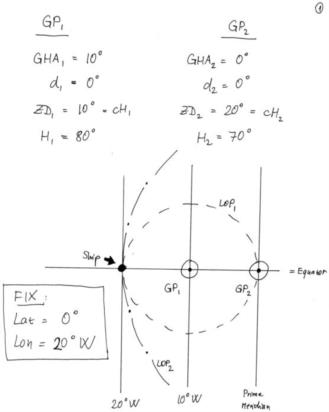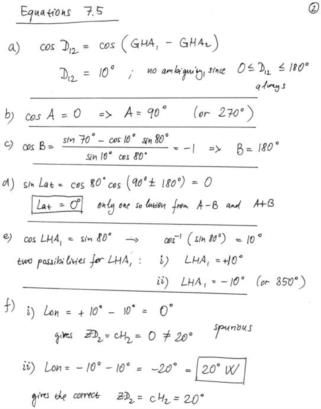
NavList:
A Community Devoted to the Preservation and Practice of Celestial Navigation and Other Methods of Traditional Wayfinding
From: Peter Hakel
Date: 2009 Nov 3, 12:05 -0800
After a brief off-list discussion with John, I'd like to comment on Eq. 7.5e, which yields LHA1. Generally, there are two distinct solutions to that equation, while the inverse cosine function yields only one of them (let's call it C). I relay John's comment, that the navigator must select C, if the ship is east of GP1, and 360-C, if the ship is west of GP1. John also writes that "the body that's to the west should always be labeled #1."
A difficulty can arise if the ship and GP1 are almost on the same meridian. Another problem occurs if these equations are to be implemented in a computer program, which does not have the above-mentioned human insight into the relative positions of the ship and the two bodies. In these cases I propose to evaluate the zenith distance to GP2 from both candidate positions, and accept the one that matches (within the machine's numerical accuracy) the ZD2 = 90 - Ho2 given on input.
For illustration I attach two pages with a simple example, in which the correct solution is given by LHA1 = 360 - C, not by C=arccos(...).
Peter Hakel
--~--~---------~--~----~------------~-------~--~----~
NavList message boards: www.navlist.net
Or post by email to: NavList@navlist.net
To , email NavList+@navlist.net
-~----------~----~----~----~------~----~------~--~---








